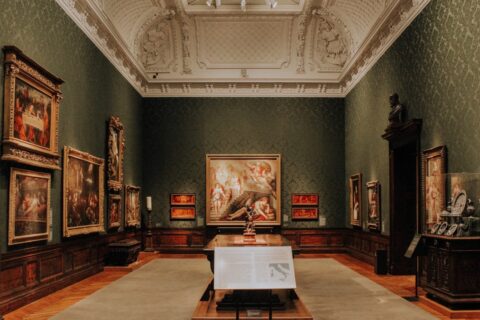Audio art transcends the traditional boundaries of music and sound, offering a unique sensory experience that resonates on a deep, primal level. This genre has seen a renaissance with the advent of cutting-edge technology and innovative techniques. This article delves into the latest advancements in audio art, exploring how artists sculpt sound to create immersive auditory landscapes that captivate the imagination.
Spatial Audio and 3D Sound:
- Spatial audio, also known as 3D sound, is a groundbreaking technology that allows listeners to experience sound from all directions, much like how we perceive sounds in the real world. Artists and sound designers are leveraging spatial audio to create immersive audio art installations and performances that transport audiences to new sonic realms.
Sound Sculptures:
- Sound sculptures are physical objects that produce sound, either acoustically or with the aid of electronics. Modern sound artists are pushing the boundaries of this form, combining traditional materials with cutting-edge technology to create interactive sound sculptures that respond to the environment or the audience’s actions.
Binaural Recording and Playback:
- Binaural recording techniques capture sound the way human ears hear it, creating a more natural listening experience. Audio artists are utilizing binaural technology to craft intricate auditory narratives that unfold in a three-dimensional sound space, offering a deeply immersive experience.
Electronic and Digital Innovation:
- The digital domain has unlocked a world of possibilities for audio art. Artists can now manipulate sound in ways that were unimaginable before, creating complex sonic layers, textures, and dynamics. Digital synthesis and processing tools have become integral to the modern audio artist’s toolkit.
Sound Installations:
- Contemporary sound installations often blend visual, architectural, and sonic elements to create multi-sensory experiences. These installations are transforming public and private spaces into realms of exploration where audiences can interact with sound in novel ways.
Ambisonics and Surround Sound:
- Ambisonics and surround sound technologies have evolved to provide a more encompassing sound field. Artists are leveraging these technologies to create enveloping soundscapes that extend beyond the traditional stereo field.
Accessible Audio Art Platforms:
- Digital platforms and social media have democratized the distribution and discovery of audio art. Artists can share their work with global audiences, while listeners have access to a vast array of audio art from around the world at their fingertips.
The world of audio art is in a dynamic state of evolution, with artists and technologists collaborating to sculpt sound in new and exciting ways. These innovations are not only expanding the horizons of what is possible in audio art but are also enriching our sensory experiences, inviting us to listen, interact, and immerse ourselves in the boundless landscapes of sound.







